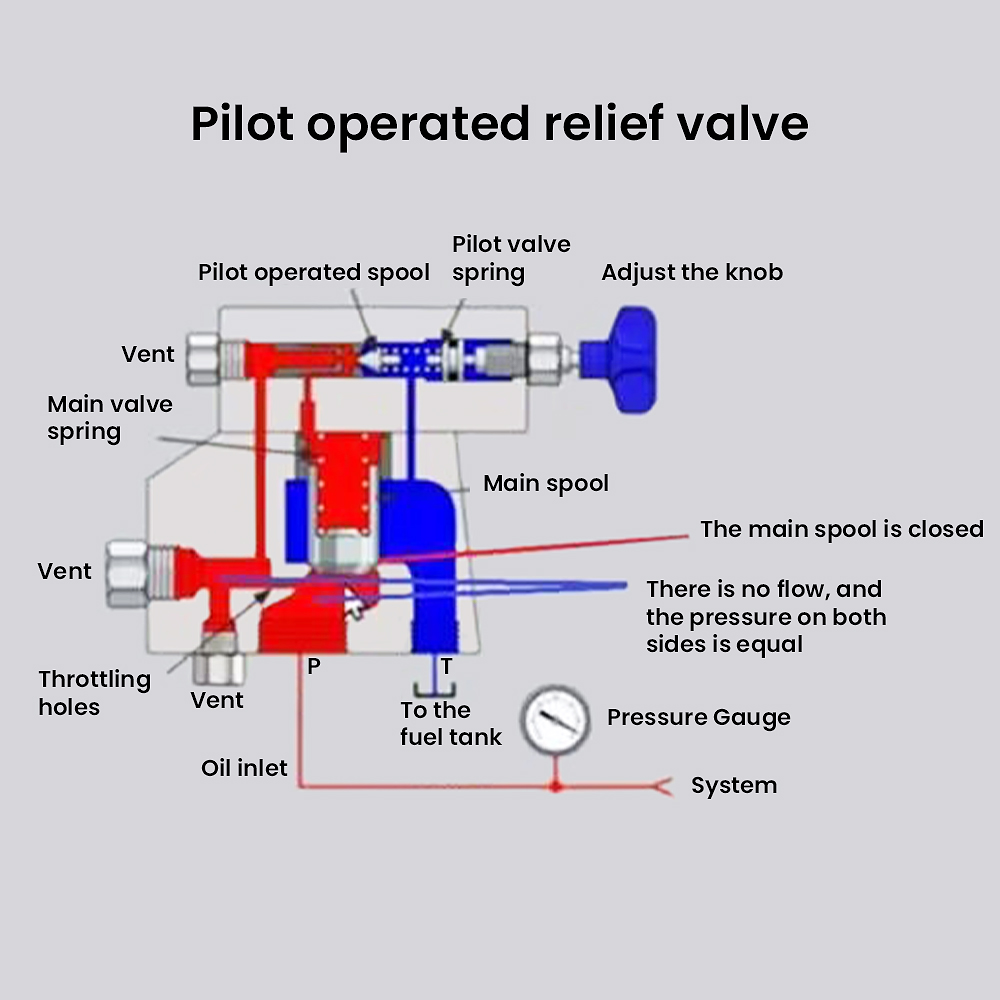What are the applications of relief valves in hydraulic systems?
The overflow valve in the hydraulic system can conveniently play the role of overload protection, open the overflow through the valve port, keep the system pressure constant or limit the maximum pressure. In addition to the function of a safety valve, it can also be used as a pressure regulating valve and an unloading valve.
01—Structure and classification of overflow valve
According to the different composition and structure, the relief valve is divided into two types: direct-acting relief valve and pilot relief valve. The combination of pilot relief valve and electromagnetic reversing valve can form an electromagnetic relief valve, and the combination of pilot relief valve and check valve can form an unloading relief valve.

02—The function and application examples of overflow valve
The relief valve can not only play the role of a safety valve, but also can be used as a pressure regulating valve, unloading valve, back pressure valve, balance valve, etc. When used as a safety valve in the system, the overflow valve is normally closed, and the overflow is only opened when the system is overloaded to limit the maximum pressure of the hydraulic system to protect the hydraulic system or mechanical structure; in the throttle valve speed regulating system , the relief valve is normally open, and at this time the relief valve is a pressure regulating valve or constant pressure valve to keep the system pressure constant.

